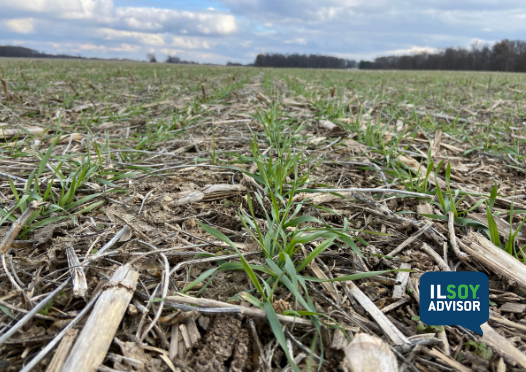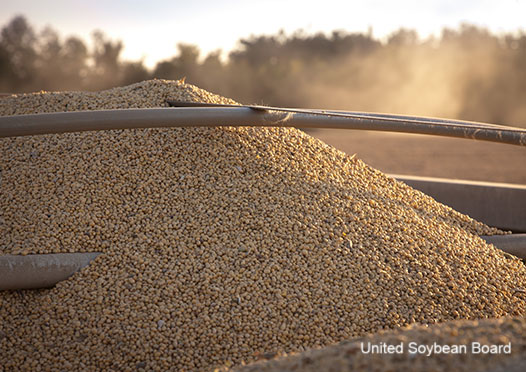ILSOYADVISOR POST
Diagnosing PPO Damage
PPO herbicides + cool, wet conditions = herbicide damage
With the recent spate of hot, dry weather it’s hard to remember that only a few short weeks ago we were inundated with rain—delaying planting and causing replants, stand loss and even crop damage. One symptom of the rainy spell was protoporphyrinogen oxidase (PPO) herbicide damage.
Growers usually apply residual herbicides before or just after planting soybeans and no longer depend on post-emergence application. PPO herbicides are Group 14 herbicides. Once applied, several factors affect weed control efficacy as well as crop safety. Commercial products containing the PPO mode of action include Authority® products, Enlite®, Envive®, Fierce®, Fierce XLT, OpTill®, Rowel®, Rowel FX, Sharpen®, Sonic®, Spartan®, Trivence®, Valor® and Valor XLT.
Normally, PPO herbicides are taken up by soybean seeds during emergence and then metabolized. However, during cool, wet weather when seedlings are under stress and not growing rapidly, plants fail to metabolize the herbicide fast enough and seedling damage occurs.
In normal years there is no PPO herbicide damage. But this year’s May weather was very different. Fortunately, herbicide damage may only be cosmetic and the seedling will recover with the onset of warm and dry weather in June. Even after damage, if your stand is still 80,000 to 100,000 plants per acre replanting isn’t justified.
Amit Jhala, Extension weed management specialist at the University of Nebraska, said: “Injury from residual application of PPO inhibitors is not common and can be confused with symptoms of soybean seedling disease. When PPO-inhibitor injury does occur, the severity of soybean injury is largely determined by environmental factors. Cool, wet soil conditions, such as we experienced this year after planting, can enhance soybean injury from soil-applied herbicides.” (Read more here)
A PPO herbicide label states:
- Application should be made within three days of planting soybeans.
- Crop injury may occur from applications made to poorly drained soils under cool, wet conditions.
- Risk of crop injury can be minimized by not applying this herbicide on poorly drained soils, planting at least 1.5 inches deep, and covering seeds with soil prior to pre-emergence applications.
- If flumioxazin-based herbicide is applied after soybeans have begun to emerge, severe crop injury will result.
Jhala added: “When scouting for potential herbicide damage, open up the cotyledons to see if they are green. If the necks are firm and the inside of the cotyledons are green, it is likely the seedling will survive. A (seedling with) a brown neck that is still firm with green cotyledons will probably survive.”
Soybean agronomist Daniel Davidson, Ph.D. posts blogs on agronomy-related topics. Feel free to contact him at djdavidson@agwrite.com or ring him at 402-649-5919.





Comments
Add new comment